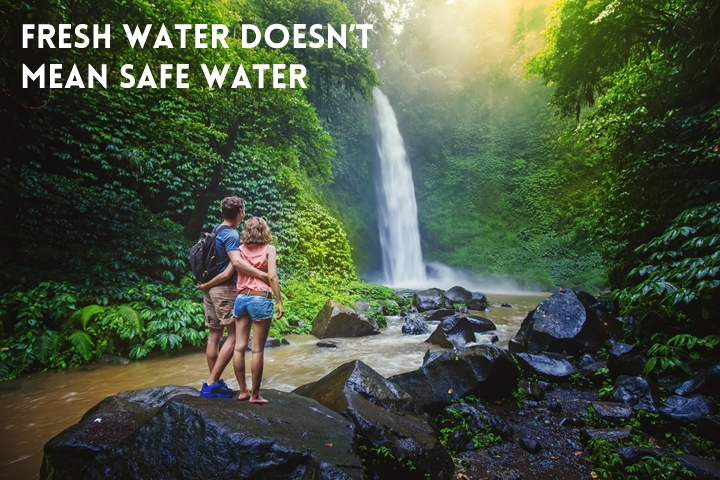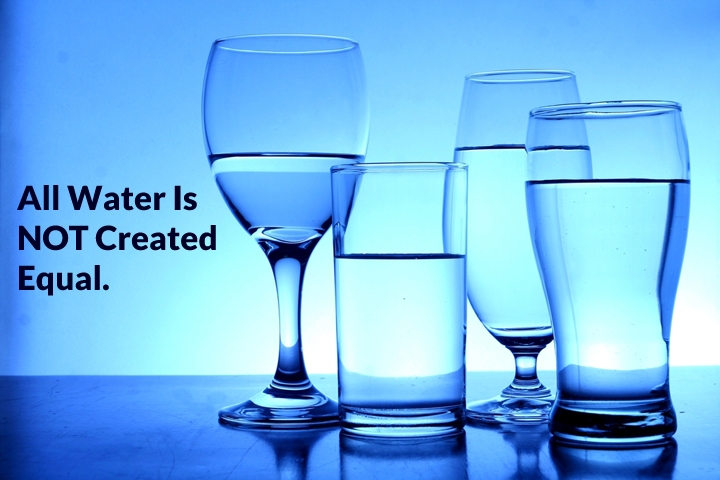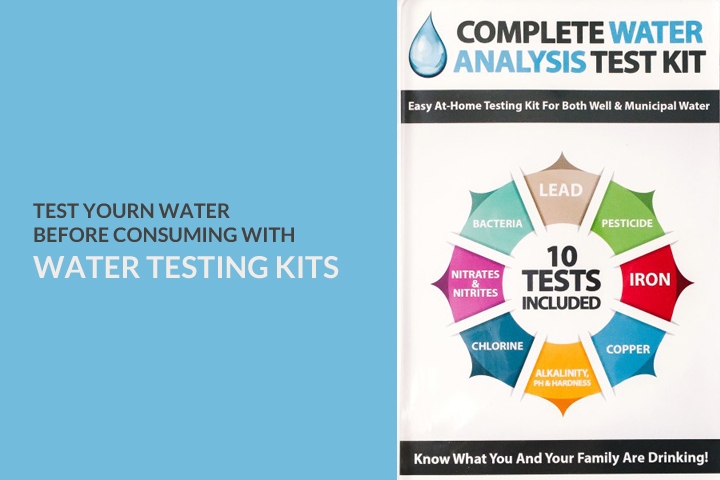There are three things the human body needs to survive: oxygen, food, and water. In a survival situation, oxygen is a given, but food and water can be harder to find. The human body can survive weeks without food, depending on the density and fat levels of the body. However, a person can only survive about three days without water.
For that reason, any survival prepper’s number one priority should be learning how to find and purify drinking water in the wilderness. Here’s a guide that can help you determine the safety of your drinking water and how to stay hydrated in a crisis.
Fresh Water Doesn’t Mean Safe Water

When you’re in the wild, drinking water without doing any purification is dangerous. Even if it comes from a fresh source like a river, stream, lake, or reservoir, that doesn’t mean it’s safe to drink. More often than not, it will make you very sick.
There are many dangers when drinking unpurified fresh water. First of all, these water sources are hubs for bacteria growth. There’s often animal urine and fecal matter mixed into the water. There can also be seepage and corrosion from naturally occurring hard metals like lead, copper, mercury, aluminum, and other substances that are poisonous when consumed.
Drinking water with any of these substances can cause you to become very, very sick. In some cases, you’ll simply develop a case of vomiting and diarrhea. In other situations, you could contract more serious conditions like dysentery, typhoid, and other life threatening diseases. The consumption of filthy water could also affect your kidneys, causing renal failure.
All Water Is Not Created Equal

There are risks present in any fresh water you find in the wilderness, but the risk is greater in some water sources than others. Water in the wilderness comes from many sources, including the following:
- Underground
- Lakes, rivers, streams, and other bodies of water
- Rainwater
- Moisture in the air
- Mountain springs
- Snow
Underground sources, lakes, rivers, and other water bodies tend to have most issues. Rainwater, snow, and mountain streams tend to be the cleanest sources of water because when the water evaporates and returns in the form of precipitation (the source of mountain springs and snow), many of the toxins are removed from the water.
It’s also important to note that water near oceans and seas can be very dangerous for consumption. Salt walter cannot be purified and used as drinking water, even when regulated by treatment facilities. If you’re looking for water that’s safe to purify and drink, check for salt content first, since consuming salt water can make you very sick or even kill you. The same goes for snow and ice found near ocean areas.
Finding Water Sources
It’s always best to look for the cleanest forms of water first, particularly if you don’t have any tools for purification. Finding this water is not easy, however.
Finding lakes and rivers is fairly simple. These large bodies of water are not only large and easy to find, but you can also see the way the plants turn to these water sources. If you have a talent for tracking, you could follow animal prints to water sources. However, these are not ideal sources of water since the purification process is more intense for this lower quality of water.
If you’re near a mountain, finding water is often as simple as hiking to the top. As the elevation rises, it will get colder and you’ll find snow and ice at the top of the mountain. Oftentimes, you’ll find mountain spring runoff from the snow and ice collections at the top of the mountain without having to climb too high. This water is usually clean enough to drink, but you should purify it if you have the time and resources.
You can also find water sources underground if you dig for them. Look for muddy areas, swamps, or dry river beds where water has collected underneath the surface. By digging a hole in these areas, you can shore up some of the water where it can be collected and purified.
Purification Techniques
When it comes to purifying water, there are several tactics that work well. In most cases, you’ll need to have some supplies with you – this is why it’s recommended to have a water purification system on hand when you head outdoors.
Here are some of the systems that work best.
Boiling: The simplest and most effective way to remove viruses and bacteria from water is to boil it. This will not remove all contaminants, but it will purify the ones that can do your body immediate harm. Water should be boiled in a metal canteen, pot, or cup for at least 60 seconds in order to ensure proper removal of contaminants.
Filtering: There are hundreds of water filters on the market that can remove dangerous particles. In some cases, the filter will be carbon or ceramic and remove bacteria and debris through old-fashioned filtering. In other cases, the filter will have a treatment kit with iodine or another chemical that will kill bacteria.
If you don’t have a filter, you can usually create one in a pinch. A napkin, t-shirt, coffee filter, or even sand can be used to remove mud, weeds, and other debris. This will not remove all the bacteria, but it will get the water ready for boiling.
Solar Stills: The sun is a surprising purifying system. Simply leaving a clear water bottle in the sun for at least 24 hours (48 hours if the water bottle is not clear or the conditions are overcast) can kill bacteria.
A solar still can also be created with a piece of plastic and a hole in the ground. This is a long, drawn out process, but it can save your life if you get desperate.
UV Lights: To accelerate the process of purifying water through solar stills, you can use UV lights, which are battery-operated devices that shine UV light. This is much faster than using the sun alone.
Chemicals: Anyone who needs drinking water while in the wilderness should always have certain chemicals on hand to purify the water. The most effective and affordable purification solution is iodine. It must be Tincture of Iodine 2% for the best effect. With just a couple of drops of this substance, you can clean your water and drink it safely. Bleach or chlorine will also work for this purpose.
As a note of caution, be sure to only use a couple of drops of iodine, bleach, or chlorine per full water bottle. Too much of this cleaning agent can be harmful when ingested.
Test Your Water Before Consuming with Water Testing Kits

Another important tool to have on hand is our complete water testing kit. This contains all 10 of our water tests so that you can quickly test the quality of water. It’s hard to trust purification techniques in the wild, and using our tests can let you know if your water is safe to drink in just 10 minutes.
For more information about our products or water purification, contact us today!

Hello. Im looking for a test kit for wilderness water drinking.
Hi Bea while you could test the water it’s recommended for outdoors men and women to always use some sort of purification on any raw water sources like streams, ponds, rivers or streams.